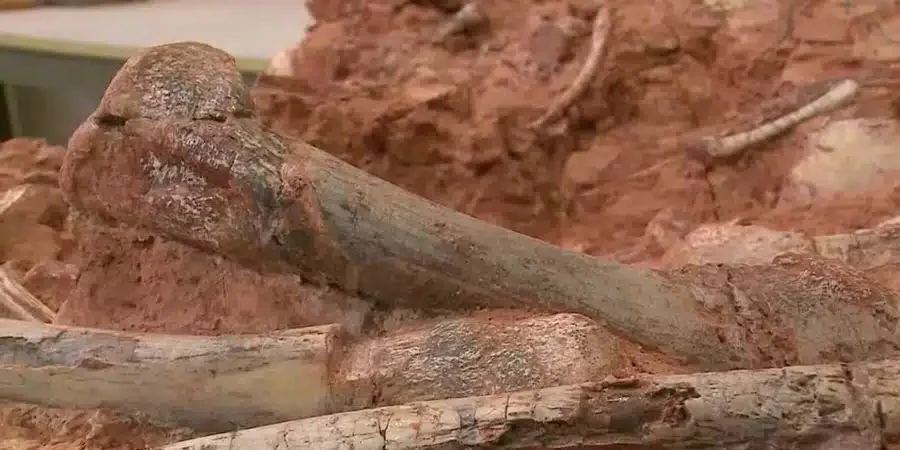Dinosaur fossils were found in RS after the rains .
Brazil: 200-million-year-old dinosaur fossils! Heavy rains that recently hit Rio Grande do Sul led researchers to find fossils of a dinosaur, possibly from one of the oldest known families, Herrerasauridae.
The expedition led by paleontologist Rodrigo Temp Müller, from UFSM ( Federal University of Santa Maria), identified the partially exposed bones in a fossil site in São João do Polêsine, a city with 2,649 inhabitants and located 221 km from Porto Alegre .
After 4 days of excavations, the team of researchers managed to remove the set of rocks containing the specimen , which could be the second most complete herrerasaurid – which lived around 230 million years ago – ever revealed in the world.
The size of the bones indicates that the dinosaur would have reached around 2.5 meters in length. After this study of the fossils in the laboratory is completed, the researchers will begin a new stage of the investigation to confirm whether the specimen is from a known species or whether it is a new one .
These steps are expected to continue for a few more months, as the work is meticulous to ensure that the material is not damaged. According to Müller, the results of the study could be published next year.
In addition to the nearly complete fossilized skeleton, paleontologists said they have recovered fossils in other municipalities in the region, including Faxinal do Soturno, Agudo, Dona Francisca and Paraíso do Sul.
And, according to geologist and UFSM professor Átila Augusto Stock da Rosa, rain and erosion end up having an impact on the region, as well as on research focuses.
The rains, which began in April this year and continued into the following month, affected 478 of the 497 municipalities in Rio Grande do Sul, according to the state government. 182 deaths were recorded and 31 people are missing.

Dinosaur fossils found in the Geopark area
The city where the dinosaur fossils were found is one of the nine that make up the Quarta Colônia Geopark – the others are Agudo, Faxinal do Soturno, Ivorá, Nova Palma, Pinhal Grande, Restinga Sêca, Silveira Martins and Dona Francisca.
A geopark is a seal obtained by territories that act towards sustainable local development . To be recognized by UNESCO ( a branch of the United Nations dedicated to educational, scientific and cultural issues) as a geopark, the site must have great scientific, cultural, geological, archaeological, paleontological, historical and scenic importance.
Another geopark in Rio Grande do Sul, Caçapava do Sul, has more than 30 catalogued geosites. The main characteristic of the territory is the presence of very old rocks.
This year, in March, UNESCO also recognized the diversity of dinosaur fossils in the Minas Gerais city of Uberaba with the creation of the Terra de Gigantes Geopark .
Uberaba’s paleontological wealth comes from rock layers from the Cretaceous period, the last of the Age of Dinosaurs. The base of these layers, the so-called Serra Geral formation , was formed when the Atlantic Ocean emerged during the separation of South America and its sister continent, Africa. This process generated waves of volcanism, forming layers of basalt (a volcanic rock) up to 400 m thick.
Paleontologists have identified at least 15 different species of Cretaceous vertebrates in the region, including carnivorous and herbivorous dinosaurs, crocodylomorphs (extinct relatives of modern alligators), turtles, fish, and even a cousin of modern frogs and toads. In addition , the area is home to the largest dinosaur nest in Brazil, with some of the eggs in excellent condition.
Source : Folhapress

